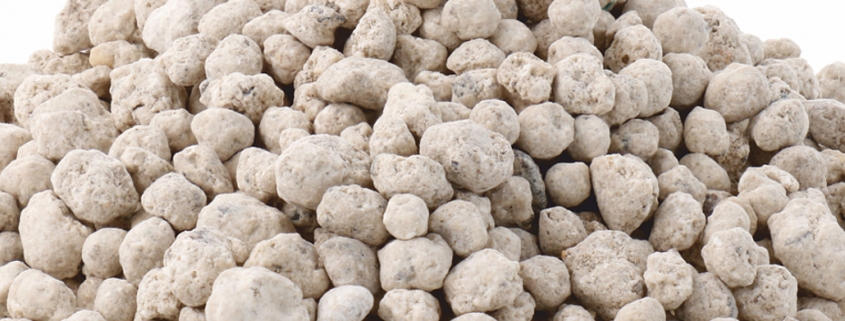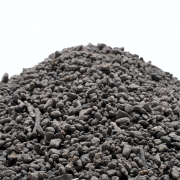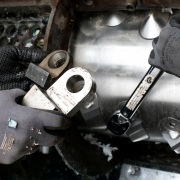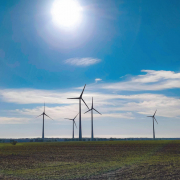Big Business Opportunities for Recycling of Nutrients Possible
When the inputs of fertilizers to soil exceed the off-take of nutrient, the resulting surplus represents a potential risk to the environment. Not a decade ago, the surplus of nitrogen in agricultural land in the EU 27 amounted to 49 – 80 kg per hectare, whereas the surplus of phosphorus reached 1.8 – 8 kg per hectare. Meanwhile, these surpluses could be reduced, but there is still the waste of nutrients. If better fertilizer handling and proportioning will not help, the reuse and recycling of organic nutrients might and could reduce the input of mineral fertilizers.
In the EU27, nitrogen accounts for almost 70 percent of the volume of all applied fertilizers. Its input to cropland for the EU27 is derived to 51 percent from mineral fertilizers and 34 percent of manure, according to the Rural Investment Support for Europe Foundation. Regarding the phosphorus input to agricultural soils, mineral fertilizers account for 43 percent and manure contributes 53 percent. The total input of nitrogen that flows into the EU agricultural system annually reaches 16.7 Mt (million tons) per annum, of which 6.5 Mt are emitted to air, 7.3 Mt emitted to groundwater and surface water and only 2.4 Mt or 14 percent consumed by humans. The input of phosphorus amounts to 2.392 Mt per annum, of which – after crop production, animal production, food processing and non-food production – 655,000 tons or 30 percent reach human consumption.
Three sources
Substrate flows in the EU are fed by three sources: animal manure, wastewater and sewage sludge and food chain waste, mostly slaughterhouse waste. The per annum 1,400 Mt of livestock manure by pigs, cattle and poultry is less than 10 percent processed. Separated, anaerobically treated or mixed with additives the material yields 0.55 Mt nitrogen and 0.14 Mt phosphorus. But manure already provides 43 percent of nitrogen (7.1 Mt) and 53 percent of phosphorus (1.5 Mt) to EU-27 agriculture. And it represents 70 percent of all recovered nitrogen and phosphorus. Their efficiency and recovery could be increased by improved handling, storage and more concentration of the material.
According to the figures, annually 10 Mt of dry sludge are produced in the EU-27, containing about 3.3 Mt nitrogen and 0.3 Mt phosphorus. The sludge is by 42 percent applied to agricultural land with big regional variations, by 27 percent landfilled, by 14 percent incinerated and by 16 percent treated in other ways like composting. So recovery amounts and rates should be reinforced as well as knowledge and material specification. For the third source – food waste – less information is available, as the definitions of waste differ among the EU Member states. The 88 Mt of biodegradable respectively organic waste in total, diverted into 11.3 Mt of compost for gardening and 56 Mt digestate used by 80 percent in agriculture, contain 0.55 Mt nitrogen and 0.11 Mt phosphorus. Additionally, slaughterhouse waste and wastewater amount to 25 Mt per year, containing 0.28 Mt phosphorus and mostly being incinerated.
To compensate mineral fertilizers
Combined, the three selected waste streams show an estimated nitrogen stream of more than 10 to 13 Mt, of which 7.8 percent is recycled, and a total phosphorus stream of 2.5 Mt, of which 1.9 percent is recycled (i.e. recovered/collected and reused). This means recycling rates between 60 and 80 percent for nitrogen and 75 percent for phosphorus. Not being recovered from these major waste streams were 2 to 5 Mt nitrogen and 0.6 Mt phosphorus. As the Fertilizers Europe Annual Overview 2015 wrote, “these quantities represent 18 to 46 percent of the mineral nitrogen and 43 percent of the mineral-based phosphorus currently applied to crops in the European Union“. In other words: A large percentage rate of mineral fertilizers for crop production could be compensated by extra organic nutrients.
The processing of manure to valuable end-products can be entered by anaerobic digestion. The following physical separation step disaggregates the ongoing mass of 80 to 90 percent liquid phase from 10 to 20 percent solid phase. The liquid fraction may be treated via Ammonia stripping or liming to (NH4)2SO4-solution or via biological treatment to K-rich effluent. Evaporation and/or filtration leads to mineral concentrates or chargeable water; alternatively, Struvite and Calciumphoshate can be precipitated. The solid fraction may be pyrolyzed to generate phosphorus-containing ashes, dried and pelletized to organic fertilizers, treated by liming to recover organic Calcium-Fertilizer or bio-thermally dried to manure compost. Processing enables cost-effective transportation of nutrients to areas where they are needed. So nutrient recycling could be a model for saving resources and – dependend to market and price conditions – for saving money.
The opportunities for nutrient recovery and reuse in the European agriculture could – amongst others – be improved by three measures, Allan Buckwell, Elisabet Nadeu and former EU Commissioner for Environment Janez Potočnik argued in a presentation at Brussels in Juli 2016. The parallel tasks to be involved contain an increasing amount of recovered nutrients, an increase of fertilizer equivalent value of recovered nutrient and the creation of recovered products that are safe, easy to store, and cost-effective in handling and use by farmers. On the other hand, it must be assured that contaminations are avoided: The European Food Safety Authority warned in 2012 of increased risk through cadmium, heavy metals, pathogens and organic contaminants such as pharmaceuticals that can be incorporated in organic fertilizers like sewage sludge and compost, and, added to animal feed, be incorporated in manure.
Recovery and recycling as strategies
The EU Commission became aware of the issue and took initiatives, particularly as phosphate rock was added to the list of 20 critical raw materials in 2015. Amongst others, the politicians launched two European Sustainable phosphorus Conferences in 2013 and 2015. Contributed 5.8 million Euro to the three years project on “Recovery and recycling of nutrients turning wastewater into added-value products for a circular economy in agriculture“ titled water2REturn. And put forward a legislative proposal on fertilizing products in March 2016, modernizing the conformity assessment and market surveillance in line with the ‘new legislative framework’ for product legislation, covering a wider range of fertilizing products (even including those manufactured from secondary raw materials), and setting limits for the presence of heavy metals and contaminants in fertilizing products. The European Parliament meanwhile adopted the proposal in late October 2017.
Nutrient stewardship got key to the United Nations Sustainable Development Goals number 2: Zero Hunger, number 14: Life Below Water and number 12: Responsible Consumption and Production. The Baltic Region States (HELCOM) committed to improved nutrient management, including enhanced phosphorus recycling. A “phosphorus Challenge” was taken up by the European Sustainable Phosphorus Platform, formed in March 2013 through a declaration, signed by over 150 organizations after the first European Sustainable Phosphorus Conference, where 45 stakeholders discussed regulatory issues surrounding the use of recycled phosphates in agriculture. The European Innovation Partnership on Agriculture and Sustainability (EIP-AGRI) addressed the issue “How to improve the agronomic use of recycled nutrients (N and P) from livestock manure and other organic sources?” Fertilizer‘s Europe organized a conference in June 2016 on “Opportunities in the EU nutrient legislation: What to look out for”. The Rural Investment Support for Europe Foundation (RISE) published a comprehensive, 96 pages containing review on “Nutrient Recovery and Reuse in European agriculture”. And for instance, Denmark announced a new waste recycling strategy in 2013, including phosphorus recycling from manure, sewage biosolids and food wastes.
Finland – model country in nutrient recycling
Finland took the issue even more seriously and committed already in 2010 to become a model country in nutrient recycling. According to figures out of 2015, the country produced 20 Mt of manure annually containing 17.5 million kilograms phosphorus, as the manure produced in Finnish animal farms would be sufficient to cover plant phosphorus needs at a national level. In April 2016 – at the Helsinki “Forum for Action“ on “Recycle nutrients for clear waters“ – the Finnish Minister of Agriculture and the Environment, Kimmo Tiilikainen, launched a 12 million Euros national Key Project Program 2016-2018 for innovation in nutrient recycling technologies. And he presented targeted goals aiming for increased nutrient recycling and energy self-sufficiency in agriculture: The target is to process 50 percent of farm manure and community wastewater sludge in sensitive areas by 2025.
Newer statistics published by the Natural Resources Institute Finland in October 2017 indicate that waste and side streams generated annually in Finland contain 26,000 tons of phosphorus and 95,000 tons of nitrogen. Even though the amount of phosphorus suitable for recycling is higher than the demand of plants for fertilizers, a total of 11,000 tons of artificial phosphorus-containing fertilizers was still used in Finland in 2015.
A fertilizer value of around 20 billion Euro
An elder estimation says that nitrogen pollution of air, water and soil costs the EU between 70 and 320 billion Euro per year. And the European Nitrogen Assessment calculates that the loss of excess nitrogen from agriculture into the environment has a fertilizer value of around 20 billion Euro per year. This shows the significance and necessity of adequate handling and recycling or reuse of nutrients. “Recycling phosphorus and nitrogen is important to promote water protection, food security and circular economy. However, currently, nutrients are not being recycled efficiently enough to reach the set goals”, says Sanna Marttinen, CEO of the Finnish Partnership for Research on Natural Resources and the Environment. Currently, 5 percent of all manure is processed in Finland, while the actual need is at least 20 percent. The situation is fairly similar in Belgium and the Netherlands, for example. Solving these problems within the EU would create new business opportunities for competitive clean technologies for domestic markets and exports.
Following Sanna Marttinen, “incentives for creating concepts for products and services over the entire nutrient cycle should be made. A functioning market for recycled nutrients would effectively balance supply and demand. The soon-to-be-reformed EU fertilizer legislation will offer opportunities, but is not a sufficient measure on its own.” Eeva Hellström, director of Finnish Innovation Fund Sitra, puts the focus on another aspect. In her opinion “water and nutrient cycles have not been regarded as being as important as they should be in developing a bio-economy. At the same time, the effect of local solutions on global challenges needs to be better understood. When developing business we have to understand water and nutrient cycles, and there are big business opportunities here.“
Photo: pixbay
GR12018










